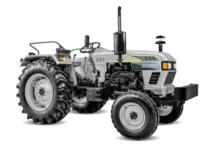Whether you are a car enthusiast or a motor vehicle owner, understanding the basics of engine troubleshooting is essential. From unexpected stalls to grinding noises from beneath the hood, it’s comforting to feel prepared and armed with knowledge on tackling common issues that arise during regular vehicle operations.
In this article, we will explore some of the most prominent engine issues drivers may face and provide solutions for remedying each problem. With no prior experience required, we’ll teach you how to identify these problems and guide you toward sound solutions.
Identifying Engine Problems – Differentiating Common Issues From Unusual Ones
As the heart of your vehicle, the engine is responsible for delivering the power you need from point A to point B. However, like any mechanical system, engines can occasionally encounter problems. From misfires to stalled engines, understanding the most common issues that can occur is crucial for any driver. By learning to differentiate between common problems and unusual issues, you can quickly identify and troubleshoot any problems that may arise.
From faulty spark plugs to clogged air filters, diagnosing and rectifying these issues can save you time, money, and hassle. Don’t let engine problems leave you stranded on the side of the road. Take the time to learn the ins and outs of engine troubleshooting to ensure a smooth and safe driving experience.
Standard Troubleshooting Techniques – How to Use Diagnostic Tools and Tests
A combination of diagnostic tools and tests is essential when diagnosing engine issues. From car tuning software to physical examinations of the various components that make up an engine, you can take various steps to troubleshoot any problems your vehicle may have.
Using your vehicle’s built-in diagnostic system or more advanced car tuning software is the quickest way to identify potential issues and locate the source of any problem. Checking fluid levels and inspecting air filters, spark plugs, wiring, and other mechanical parts can often help you determine precisely what’s causing any issues with your engine. Additionally, running test drives on different types of roadways can often reveal further performance information which may not otherwise be identified in standard diagnostic tests.
By taking the time to familiarize yourself with some of the more common troubleshooting techniques, you can better equip yourself to diagnose and remedy any engine issues that may occur.
The Different Types of Problems You May Encounter – Categorizing and Understanding What They Mean
Whether it’s a strange noise coming from the engine, low-performance levels, or unusual vibrations while driving, you may encounter many problems with your engine. From fuel injector issues to ignition coil malfunctions and more, understanding what type of problem you are dealing with is vital to resolving it efficiently.
These issues generally fall into three categories: mechanical, electrical/electronic, and fuel-related. Mechanical problems include everything from broken or worn-out parts to faulty seals or gaskets. Electrical/electronic issues often involve technology within the vehicle, such as wiring connections or a failing alternator.
Lastly, fuel-related problems typically involve the fuel system, such as incorrect air-to-fuel ratios, incorrect fuel pressure readings, or a clogged filter. Car tuning software is a great way to identify and diagnose these problems.
Investigating the Problem Further – Looking at the Parts and Potential Causes
Once you’ve identified and categorized your engine problem, it’s time to investigate further. Begin by looking at the parts in question. Check for loose connections, worn-out components, or any other signs of damage that may be causing issues with your engine. Additionally, if you’re dealing with a fuel-related issue, take some time to inspect the fuel lines, injectors, and filter for any potential blockage or obstruction.
In some cases, you may also need to look into possible causes of the problem, such as driving habits, lack of maintenance, contaminated fuel or oil, or other environmental factors. Looking beyond just the parts themselves and taking a holistic view of what could be causing any issues with your engine performance is essential for resolving the problem effectively.
Repairing the Issue – Understanding How to Fix it Right the First Time
Once you’ve identified the cause and source of any engine issues, it’s time to begin repairs. Depending on the type and severity of the problem, a simple tune-up or other minor adjustments may be enough to resolve the issue. Other times, more significant repairs, such as replacing components or performing maintenance tasks like oil changes or spark plug replacements, may be necessary.
Understanding how to properly repair an engine issue is essential to avoid further problems. If you’re uncomfortable handling repairs yourself, enlisting the help of a professional mechanic may be your best option for resolving any issues quickly and safely.
Preventative Maintenance Tips – Staying on Top of Regular Checks to Avoid Future Problems
The best way to prevent engine issues is by staying on top of regular maintenance checks. These can range from simple tasks like checking fluid levels and changing oil at proper intervals to more complex jobs such as inspecting belts, hoses, and spark plugs for any signs of wear or damage.
Additionally, investing in diagnostic tools such as car tuning software can help you maintain a comprehensive view of your vehicle’s performance so that you can quickly pinpoint any potential problems before they become significant issues. Following these tips will keep your engine running smoothly for years to come.
Read Also: How to Look up and Check Texas Vehicle Identification Number?



































































